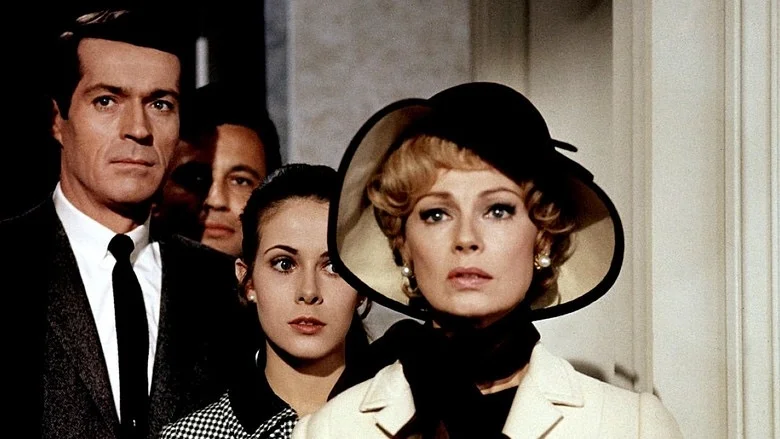Beginner’s Guide to Alfred Hitchcock: Spellbound (1945)
Alfred Hitchcock and psychoanalysis seem like they go hand in hand. Hitchcock peered into the dark recesses of the mind, bringing the subconscious up to the surface. Hitchcockian protagonists often have some sort of hang-up preventing them from finding happiness. In the 1940s, America was swept up in a psychoanalysis craze, and star producer David O. Selznick tapped Alfred Hitchcock to make Hollywood’s first psychoanalysis movie. Based on the novel The House of Dr. Edwardes by Francis Beeding (pseudonym for John Palmer and Hilary A. Saunders), Spellbound stars Ingrid Bergman, Gregory Peck, Michael Chekhov, and Leo G. Carroll. Written by frequent Hitchcock collaborators Ben Hecht and Angus MacPhail, the film features a score by Oscar-winner Miklos Rozsa.
Dr. Constance Petersen (Bergman) is a psychiatrist who falls in love with the new director of the hospital where she works, Dr. Anthony Edwardes (Peck). Dr. Edwardes is replacing Dr. Murchison (Carroll), who is being forced to retire. Constance notices that Dr. Edwardes has a strange phobia of parallel lines and discovers that the man is an imposter through comparing handwriting. The imposter confesses that he killed Dr. Edwardes and took his place, but does not know who he really is. Believing he is innocent, Constance sets out to solve the murder and help the imposter.
Spellbound is a companion piece to Marnie, which I discussed back in July. Both films are about one person trying to psychoanalyze another in order to crack a big mystery—in Marnie, it was the title character’s aversion to sex; here, it’s who killed Dr. Edwardes. Spellbound is interesting in its gender reversal. Constance is the detective/psychiatrist, with the imposter—later revealed to be John Ballantyne—in the feminized role of patient/amnesiac. Seeing Peck, typically a commanding, authoritative actor, in such a passive, confused role is fascinating. That’s especially true when compared to Ingrid Bergman, who is as warm, determined, and empathetic as ever.
Hitchcock and Selznick clashed during the making of this film, even more so than their previous film Rebecca in 1940. Selznick wanted the film to be a positive portrayal of psychoanalysis, even hiring his own therapist Dr. May Romm as a consultant, but Hitchcock wasn’t interested into that. He often ignored Dr. Romm. The other point of contention was the hiring of Salvador Dali to create the film’s important dream sequence. Many of Dali’s ideas were simply impossible (a scene where Bergman is covered in ants) and Selznick cut much of the sequence.
Spellbound has some visually inventive moments where Hitchcock uses forced perspective quite brilliantly. The psychoanalysis is almost too neatly employed to solve the murder. At the time, the psychiatry angle was new, but now it just doesn’t have the same novelty. Also, there’s no danger in the film. Perhaps I’m too influenced by To Kill a Mockingbird and Peck’s other humanitarian efforts, but I don’t find him believable as a murder suspect. Both he and Bergman pull off the romance, but without that menacing angle, the love story is too straightforward for me. It borders on cheesy, even by my Nancy Meyers-loving standards.
Famed composer Miklos Rozsa won the Academy Award for his score in Spellbound. Selznick wanted Spellbound to be the first film to use the theremin, but as luck would have it Billy Wilder’s The Lost Weekend (also composed by Rozsa) beat this film by a month. Selznick was really angry about that. However, I think Spellbound has the more memorable score, with the haunting music complementing Hitchcock’s suspense quite beautifully.
Spellbound became a hit with audiences and critics, garnering seven Academy Award nominations including Best Picture and Best Director. It certainly has its fans, and while I don’t consider it top 10 Hitchcock, it really is an expressive and compelling film. It serves as a time capsule for the 1940s, where psychoanalytic terms were considered edgy, with some of the dialogue cut to please the censors. Spellbound is important as it's responsible for bringing psychoanalysis to mainstream Hollywood, influencing Woody Allen, The Sopranos, and other depictions of the therapist/patient dynamic.















